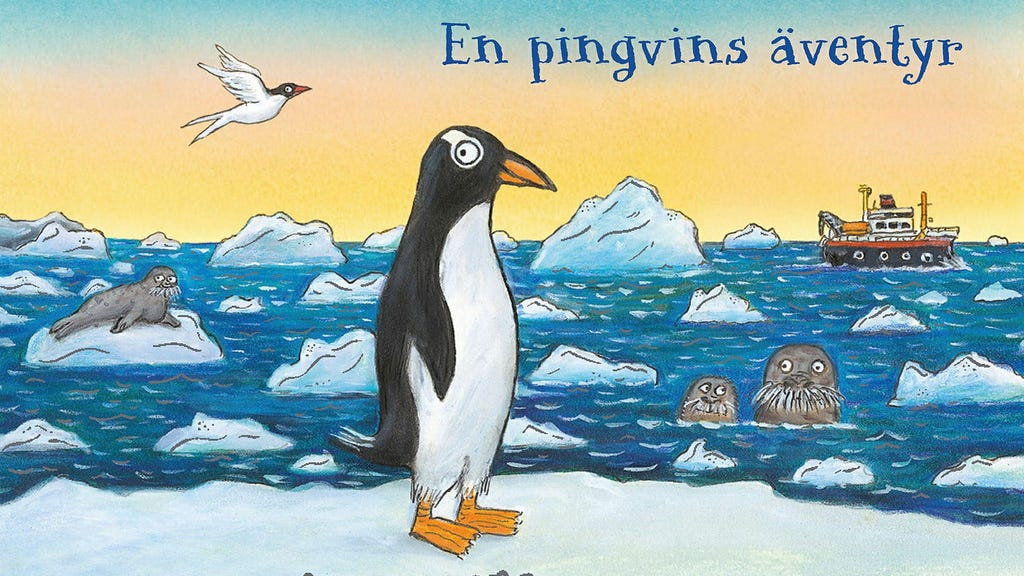Snow in Children’s Literature: Exploring Winter Worlds
The magic of snow, its transformative power over landscapes and its unique ability to evoke a sense of wonder, has long been a source of fascination for both children and adults. In children’s literature, snow often serves as more than just a backdrop; it becomes a character in its own right, shaping narratives and imbuing stories with a touch of magic, adventure, and even melancholy. Three recent picture books, "Vi går upp i snömolnet" (We Ascend into the Snow Cloud), "Snöbollen" (The Snowball), and "Från pol till pol: en pingvins äventyr" (From Pole to Pole: A Penguin’s Adventure), each offer a unique perspective on the allure of snow and its influence on the lives of their characters. These books, targeting young audiences from the age of three, employ diverse artistic styles and narrative approaches to explore themes of wonder, change, and belonging, all centered around the captivating presence of snow.
In "Vi går upp i snömolnet" by Jenny Holmqvist and Per Gustavsson, snow creates a sense of otherworldly wonder. The story follows a pig, a baby, and a child as they venture into a snow-covered landscape, questioning if the falling flakes might be flour from the sky. The book’s charm lies in its whimsical approach, reminiscent of a dreamlike state where the familiar becomes extraordinary. Per Gustavsson’s illustrations enhance this sense of wonder, transforming the ordinary into something magical and surreal. The snow, in this context, isn’t merely a weather phenomenon; it’s a gateway to an altered reality, a canvas for imaginative exploration. This approach echoes Sverker Sörlin’s observation in his book "Snö" (Snow) where he describes snow as both an internal and external state, impacting both the immediate environment and the planet itself. While "Vi går upp i snömolnet" doesn’t explicitly address climate change as Sörlin does, it captures the unique atmosphere snow creates, presenting it as an exceptional and exciting event.
"Snöbollen," written by Sara Villius and illustrated by Lisen Adbåge, focuses on the ephemeral nature of snow, its constant state of flux between solid and liquid. Adbåge’s bold brushstrokes and pen lines create a visually striking narrative, capturing the dynamic essence of winter. The story revolves around a snowball’s desire to remain frozen, mirroring a child’s reluctance to leave the wintry outdoors. This simple premise, grounded in everyday childhood experience, resonates deeply with young readers who understand the bittersweet feeling of winter’s fleeting beauty. The snowball’s yearning to witness the arrival of summer adds another layer to the narrative, highlighting the cyclical nature of seasons and the inevitable transformations they bring. Adbåge’s use of blue tones effectively portrays the various facets of snow, from its pristine whiteness to its eventual melting, creating a visually rich and emotionally resonant experience for the reader.
Julia Donaldson and Axel Scheffler, the acclaimed duo behind the Gruffalo series, take readers on a different kind of snow-themed adventure in "Från pol till pol: en pingvins äventyr." This story centers on Ville, a zoo-dwelling penguin who has never experienced the natural habitat of his species. Yearning for snow and ice, Ville embarks on a journey to the South Pole to connect with his relatives. The narrative structure, presented in rhyming verse, adds a playful rhythm to the story, making it engaging for young audiences. The journey itself becomes a metaphor for self-discovery and the pursuit of belonging, as Ville navigates the vast ocean and its inherent dangers. The story highlights the importance of environment and the innate connection between a creature and its natural habitat. While the narrative emphasizes adventure and humor, it also implicitly touches on themes of displacement and the search for one’s true home.
These three picture books, each unique in their narrative and artistic approach, demonstrate the versatility of snow as a literary device. From the dreamlike wonder of "Vi går upp i snömolnet" to the poignant contemplation of change in "Snöbollen" and the adventurous journey of self-discovery in "Från pol till pol," snow serves as a catalyst, driving the narrative and shaping the emotional landscape of these stories.
The illustrations in each book play a crucial role in conveying the essence of snow and its impact on the characters and their environment. Gustavsson’s whimsical style in "Vi går upp i snömolnet" creates a sense of otherworldly charm, while Adbåge’s bold brushstrokes in "Snöbollen" capture the dynamic and ever-changing nature of winter. Scheffler’s familiar and expressive characters in "Från pol till pol" bring warmth and humor to Ville’s adventurous journey. These visual narratives complement the written text, enriching the reading experience and allowing young readers to connect with the stories on multiple levels.
The thematic exploration of snow in these books extends beyond its physical properties. Snow becomes a symbol of transformation, wonder, and the cyclical nature of life. In "Snöbollen," the melting snowball represents the inevitable changes that come with time, while in "Från pol till pol," snow and ice symbolize Ville’s longing for belonging and his connection to his ancestral home. "Vi går upp i snömolnet" uses snow to create a sense of magical realism, where the ordinary transforms into the extraordinary. These diverse interpretations of snow demonstrate its symbolic power and its ability to evoke a wide range of emotions and ideas. These books invite young readers to appreciate the multifaceted nature of snow, not merely as a weather phenomenon, but as a powerful force shaping stories and capturing imaginations. They encourage reflection on the environment, the passage of time, and the universal desire for belonging and connection.














